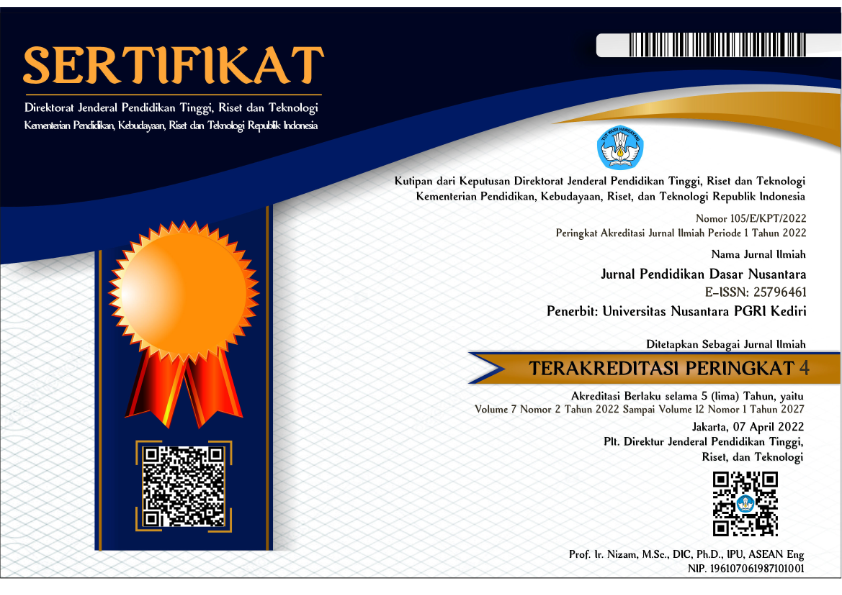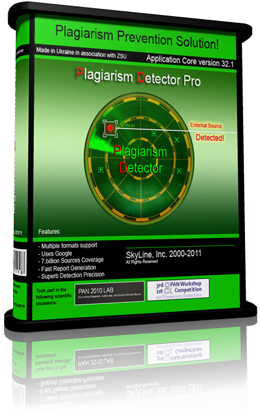Pengembangan Pedoman E-Modul Berorientasi Student Active Learning Sebagai Pendukung Pembelajaran di Sekolah Dasar
DOI:
https://doi.org/10.29407/jpdn.v5i2.13999Keywords:
e-module guide, Thematic Learning, Student Active learningAbstract
This study aims to (1) produce a valid e-module guidelines for active student learning in elementary schools that are valid; (2) produce eligibility guidelines for student active learning oriented e-modules in Elementary Schools, and (3) produce practical student learning oriented e-module guidelines. This research uses ADDIE model development research design which consists of 5 levels, namely analysis, design, development, application, and evaluation. The results showed that the results of the validation trial of teaching materials experts and material experts, the average score obtained was 83.95 with valid criteria. The results of user trials (teachers and students) then the average score obtained is 3.5 very well / very practical
Downloads
References
Association For Educational Communications And Technology (AECT). 1977. The Definition Of Educational Technology. Washington, D.C
Byars, M.N. 2015. Printed Books versus Digital Books. California: the Faculty of the Graphic Communication Departement California Polytechnic State University
Deny Kurniawan, Agus Suyatna, W. S. 2014. Pengembangan Modul Interaktif Menggunakan Learning Content Development System pada Materi Listrik Dinamis. Jurnal Pembelajaran Fisika, 3(1), 1–10
Darling, Linda., H. 2006. Constructing 21st century teacher education. Journal of teacher education, 57. 300-314
Handayani, R.D. 2016. Pengembangan Bahan Ajar Elektronik Berbasis Mobile Learning pada Mata Kuliah Optik di FKIP Universitas Jember. Jurnal Ta’dib. Vol. 17, No. 1, 81-85
Heinich, R. et al. 2002. Instructional Media And Technology For Learning, 7th edition. New Jersey: Prentice Hall, Inc.
Kemdikbud. 2013. Peraturan MenteriPendidikan dan Kebudayaan Republik Indonesia No. 81A Tahun 2013 Tentang Implementasi Kurikulum Pedoman Umum Pembelajaran.Jakarta:Kemendikbud
Mulyasa. 2007. Standar Kompetensi dan Sertifikasi Guru. Bandung: Remaja Rosdakarya.
Nurmita, F. 2017. Pengembangan Buku Ajar Siswa dan Buku Guru Berbasis Matematika Realistik Untuk Meningkatkan Pengetahuan, Sikap Dan Keterampilan Matematika Siswa Kelas VII SMP AL Karim Kota Bengkulu. EDU-MAT Jurnal Pendidikan Matematika, 5(April), 86–98.
Piskurich, George M. 2000. The ASTD Handbook of Training Design and Delivery : A Comprehensive Guide to Creating and Delivering Training Programs, Instructor-led, Computer-based, or Self-directed. United States: McGraw-Hill Professional
Rockinson, A.J., Courduff, J., Carter, K. dan Bennett, D. 2013. Electronic versus Traditional Print Textbooks: A Comparison Study on the Influence of University Students Learning. Jour nal Hompage, 63 (2013) 259-266
Sanjaya, Wina. 2005. Pembelajaran dalam Implementasi Kurikulum Berbasis Kompetensi, Kencana Prenada. Jakarta: Media Group
Trilling, B., & Fadel, C. 2009. 21st Century Learning Skills. San Francisco: Jossey - Bass.
Downloads
Published
Issue
Section
License
Authors who publish with this journal agree to the following terms:
- Copyright on any article is retained by the author(s).
- The author grants the journal, the right of first publication with the work simultaneously licensed under a Creative Commons Attribution License that allows others to share the work with an acknowledgment of the work’s authorship and initial publication in this journal.
- Authors are able to enter into separate, additional contractual arrangements for the non-exclusive distribution of the journal’s published version of the work (e.g., post it to an institutional repository or publish it in a book), with an acknowledgment of its initial publication in this journal.
- Authors are permitted and encouraged to post their work online (e.g., in institutional repositories or on their website) prior to and during the submission process, as it can lead to productive exchanges, as well as earlier and greater citation of published work.
- The article and any associated published material is distributed under the Creative Commons Attribution-ShareAlike 4.0 International License
































